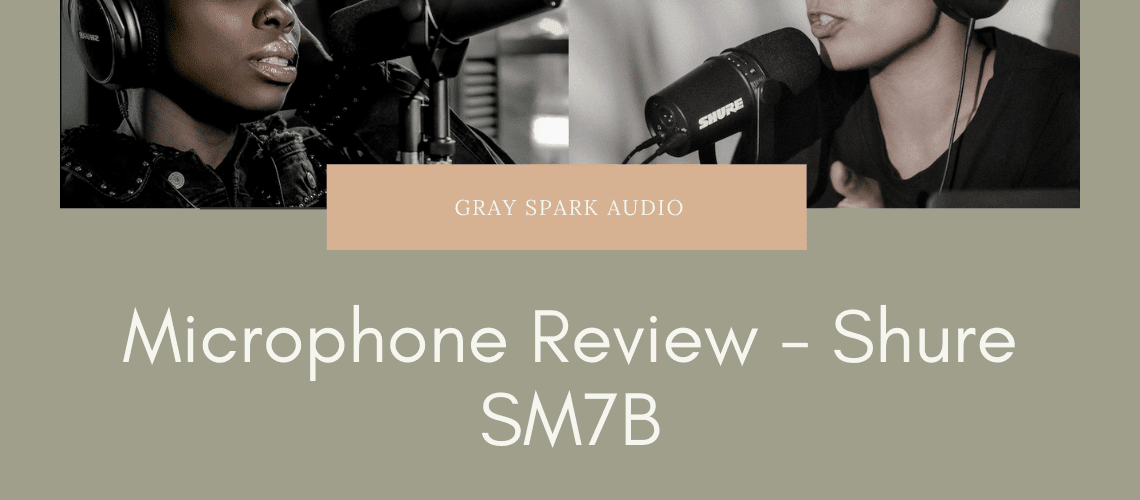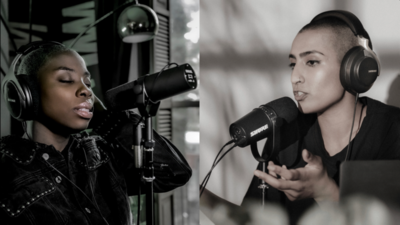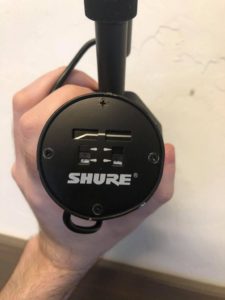
The Shure SM7B is beloved by professional musicians for its reliable performance, top-grade construction, and noise attenuating technology that lends itself to clear recordings. This isn’t a mic for those making their first foray into recording, rather it’s for aspiring professionals and industry veterans. The uniform frequency response is excellent for all ranges of recording, and the alternative responses are fitting for other studio needs.

Introduction
The original SM7 debuted during Michael Jackson’s Thriller music video, and its iterations remain a must-have for recording musicians and avid enthusiasts alike. The SM7B is a costly microphone, and you’re paying for two things: professional performance and premium construction. We’re breaking down what makes the Shure SM7B a studio staple, and why it’s worth the cost.
Who is suited to use SM7B?
- Vocalists will want to save for the Shure SM7B as it’s the perfect companion for recording in a controlled environment. Users can cycle through three frequency responses: flat, bass rolloff, and presence boost, depending on the desired effect.
- Professional audio mixers benefit from the high-pass frequency response: it’s great for minimizing low-frequency electronic hums from surrounding equipment. This makes post-production more efficient as it’s one less thing to edit out.
- Podcasters should also think about getting this dynamic microphone. Vocal reproduction is clear and off-axis rejection is remarkably effective, thanks to the cardioid pickup pattern. Even if you can’t afford professional room treatment, the off-axis rejection mitigates unwanted background noise, again, for its crisp vocal reproduction.
Why SM7B?

The Shure SM7B reflects the company’s attention to detail and prioritization of premium construction. Upon removing the mic from its packaging, I immediately noticed the mutable frequency response illustration on the back. Two toggles allow you to select one of three responses, depending on what the situation calls for (e.g. bass rolloff, flat, presence boost). The yoke mounting mechanism is brilliant and makes it easy to attach and detach the SM7B from your favorite mic stand. What’s more, the yoke’s adjustment is smooth and offers just enough resistance to keep the microphone in its deliberately placed position.
The pre-installed pop filter effectively eliminates plosives and fricatives, meaning you can speak freely without monitoring how close you are to the recording capsule. When testing the microphone, the use of an external pop filter felt redundant. Shure also provides its A7WS detachable windscreen to further reduce plosives and produce a bassier-tone. To install the windscreen properly, refer to the included user guide as it requires the use of an included attachment piece.
Shure features plenty of advanced internal hardware to protect the cartridge and other components. Its internal air suspension shock apparatus greatly reduces mechanical noises that would otherwise make their way into recordings. It’s also serviced to reject hums emitted from computer monitors. While these sounds are ignored by our brains, they’re often registered by sensitive microphones and can add time to post-production when not preemptively combated.
What do each Frequency Response mean?
- Flat: this mode is great for users who seek natural audio reproduction and is versatile as it bodes well for both speech and music. The disadvantage, however, is that if you’re recording with a particularly bass-heavy instrument or a vocalist with an unusually low voice, you may find that the proximity effect hampers low-midrange recording.
- Bass rolloff: this mode acts similarly to applying a high-pass filter on a digital audio interface. Low frequencies are gently attenuated, which further quiets low-frequency electrical hums and potential distortion that, again, could be caused by the proximity effect.
- Mid-range emphasis (presence boost): this setting appears similar to that of the bass rolloff response but with slightly more amplification to the mids and treble. This is good if you’re recording a high-pitched string instrument, say a violin or guitar.

What polar pattern does SM7B use?
Like the famed Elvis microphone, the Shure SM7B is a dynamic mic with a cardioid polar pattern. For those unfamiliar with audio hardware jargon, this means that it’s sturdy and less sensitive to loud noises compared to condenser mics. In other words, the Shure SM7B is equipped to minimize audio clipping and signal distortion from loud outputs.
This microphone isn’t for the generalist as it affords just one pickup pattern: cardioid. Its specialization makes it a great pick for podcasters, announcers, and singers because sounds directly in front of the microphone are clearly registered while off-axis noise is ignored. Another perk of this heart-shaped polar pattern is its forgiving nature. Users need not be precise about placement, so you can focus more on the musician’s performance than logistics.
Requirements to use SM7B?
- Whether you record from a blanket fort or professional studio, you’re going to need a mic stand. Podcasters or streamers working from a desktop should consider a mounted boom arm instead.
- No matter where you take the Shure SM7B, you need an XLR cable to plug into an audio interface or mixer.
- Contrary to my initial assumption, the Shure SM7B does not require phantom power. That said, it won’t damage the equipment if you happen to use it with a CL-1 Cloudlifter.

